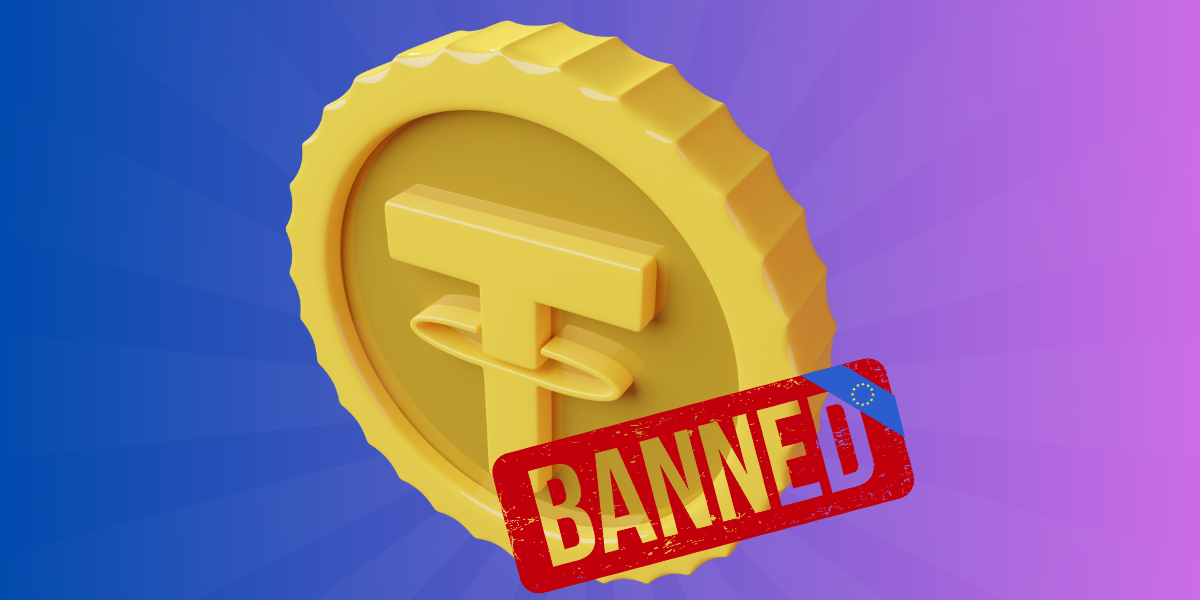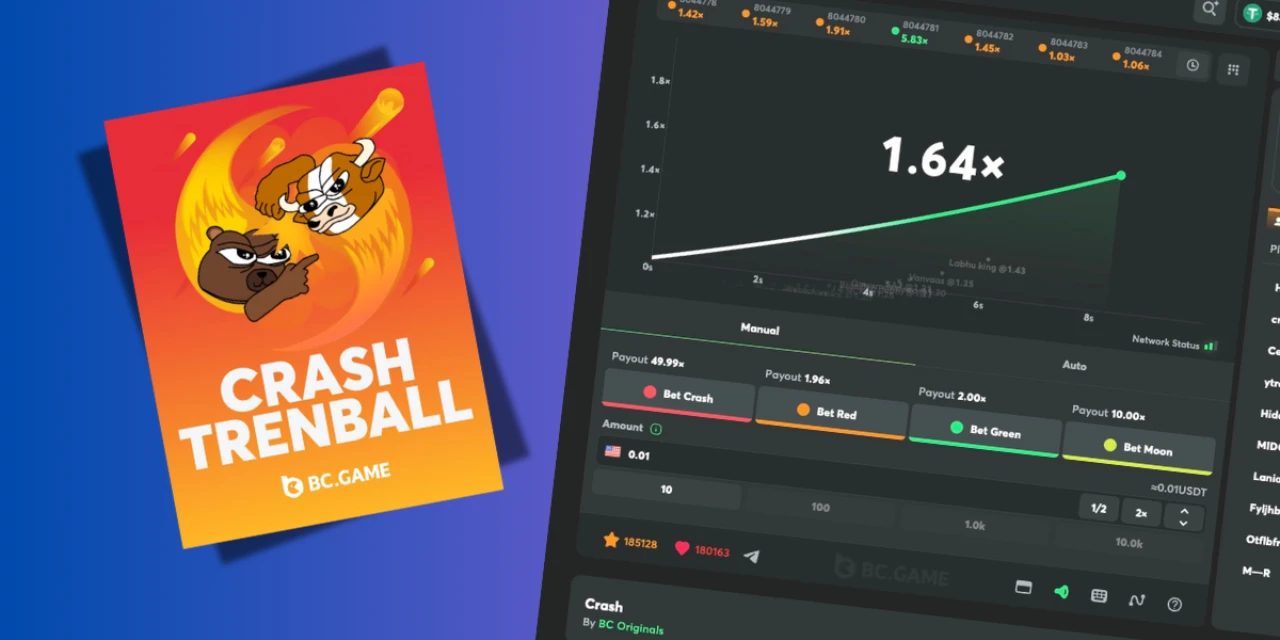
Is Europe really banning Tether? What MiCA means for EU crypto casino players?
The global crypto market is worth north of $250 million, and a big chunk is attributed to Europe. But things are about to get messy.
Tether (USDT), the go-to stablecoin for many players, isn’t officially banned… but it might as well be.
In this piece, I’ll walk you through what’s changing, when it’s happening, and what your options are if you’re an EU-based crypto gambler.
🔑 Key Takeaways:
- Despite USDT’s 47.3% dominance in some platforms, MiCA forces its removal from European exchanges
- European gamblers must switch to MiCA-compliant options like USDC or EUR-denominated stablecoins
- USDT’s removal creates barriers between European gamblers and their preferred gambling currency
- Several major exchanges have already removed USDT from their platforms to adhere to MiCA compliance
What exactly does MiCA require from Tether?
MiCA doesn’t call out Tether by name, but its rules hit USDT hard.
Here’s why:
- Licensing: MiCA mandates that issuers of fiat-pegged tokens like USDT must have an EU e-money license. Tether currently doesn’t have one, which means exchanges regulated by MiCA can’t legally list USDT anymore.
- Transparency and Reserves: Tether would also need to disclose monthly audits of its reserves, approved by EU regulators, to remain compliant. Historically, transparency has been a challenge for Tether.
- Transaction Volume Caps: MiCA enforces strict volume limits – either 1 million transactions or €200 million daily. Given Tether’s massive EU transaction volumes, this would frequently trigger halts even if licensed.
What does that look like in practice?
Even if Tether got the green light tomorrow, its daily trading activity in Europe would blow past the threshold almost instantly.
That would force automated pauses on issuance, effectively killing its utility for regular trading or payments.
And considering how dominant Tether is, it accounts for 47.3% of turnover on Cloudbet alone. This change could seriously shake up the way EU players gamble with crypto.
How are exchanges responding?
As of today (September 30, 2025), most major EU-regulated platforms have already delisted or heavily restricted USDT:
- Binance: Completed the removal of USDT from all spot trading pairs for EEA users. Deposits and withdrawals are expected to remain active for a short grace period but will eventually close.
- Kraken: USDT is no longer available to any customers based in the European Economic Area.
- Crypto.com: Fully converted leftover USDT balances and now only supports MiCA-compliant stablecoins for EU users.
- Coinbase: Wrapped up its stablecoin cleanup by December 2024, as planned.
- Uphold: Was one of the earliest movers, delisting USDT back in July 2024.
Smaller EU-based exchanges have mostly followed suit, with many removing USDT from trading pairs or disabling deposits to stay on the right side of MiCA.
At this point, regulated on-ramps and off-ramps for Tether in Europe are practically gone.
What does this mean for crypto casino players in the EU?
The new regulatory framework will have a big impact on casino players, that’s for sure. You can still hold and move USDT privately, but the convenience of using regulated exchanges is rapidly disappearing.
Here are your new options:
- Self-custody wallets: Still viable for personal holdings and peer-to-peer transactions.
- Offshore exchanges: May continue listing USDT, but risk enforcement if they don’t geo-block European users.
- Payments and retail use: Even if Tether becomes licensed, the daily transaction caps effectively rule out its use for regular payments.
As EU exchanges limit USDT, liquidity will inevitably shift towards alternatives like USD Coin (USDC), already licensed in the EU, or EUR-denominated stablecoins without such stringent limits.
As a matter of fact, MiCA may favor USDC over USDT.
Are crypto casinos removing Tether?
For now, no leading crypto casinos continue to list USDT alongside BTC and ETH.
Most casinos operate under Curaçao licences, which impose no special restrictions on dollar‑pegged stablecoins.
That said, the picture could shift quickly. Europe’s MiCA rules, the UK’s incoming fiat‑backed stable‑asset regime, and tighter U.S. oversight all loom on the horizon, and casinos targeting those markets may eventually swap Tether for regulated alternatives.
And it’s not hard to predict that USD Coin may as well be the successor of Tether.
Which will be the best Tether alternatives for gamblers?
If you’re one of the many stablecoin casino fans affected by the Tether shake-up in Europe, don’t worry – there are solid alternatives. There are several options already gaining traction across crypto casinos:
- USDC (USD Coin)
Issued by Circle and fully backed by audited reserves, USDC is the most obvious replacement for USDT. It’s already MiCA-compliant and widely supported across casinos, exchanges, and DeFi platforms. - DAI
DAI is a decentralized stablecoin backed by crypto collateral instead of fiat. It’s a bit more complex under the hood, but it offers full transparency and less centralization – something many crypto-native users appreciate. - TrueUSD (TUSD)
TUSD is another fully-backed stablecoin with real-time reserve attestations. It doesn’t have the same volume as USDT or USDC, but it’s picking up steam in the casino space due to its transparency focus. - Binance USD (BUSD)
While BUSD is being phased out in some regions, it’s still accepted at many casinos. It was historically one of the most trusted stablecoins, but future support will depend on ongoing regulatory moves.
For players who want to avoid USD-pegged coins altogether, euro-backed stablecoins are an increasingly popular option, especially in the MiCA-regulated EU.
However, most of them aren’t available in reputable crypto casinos, at least for now.
Will Tether adapt?
At this point, the ball’s in Tether’s court. If they want to stay relevant in the EU, they’ll need to go all-in on MiCA compliance – starting with an e-money license and audited monthly reserve disclosures.
They’ll also have to limit daily issuance to stay under MiCA’s strict caps, or somehow win an exemption as a “significant” token (which is no easy feat).
So far, though, Tether hasn’t moved.
There has been no formal licensing application, and the public messaging has been vague, labeling the delistings as “rushed” without offering a clear plan.
If that doesn’t change soon, USDT could become a niche asset in Europe, only usable through offshore platforms and personal crypto wallets.
Implications if Tether is banned in Europe
If Tether ends up formally banned – or just remains functionally unlisted – across the EU, the ripple effects could be big:
- Liquidity shifts: Traders may move to offshore or unregulated platforms, increasing exposure to riskier venues.
- Market fragmentation: USDT’s dominance in global trading pairs means EU-based users could lose access to deeper liquidity.
- Operational headaches: Projects and payment processors relying on USDT will need to retool for new stablecoins, adding friction and cost.
- Regulatory precedent: A de facto Tether ban could encourage other jurisdictions to take a similar approach, isolating it further.
Most importantly, it marks a turning point – where crypto’s largest stablecoin may no longer be viable in one of the world’s biggest crypto casinos.
Final words
Although it’s not an outright ban, MiCA effectively squeezed USDT out of Europe’s regulated exchanges unless Tether swiftly adapts to these new, tough EU crypto rules.
European gamblers and investors will soon need to pivot to compliant stablecoins or risk losing convenient euro on-ramps and off-ramps.








